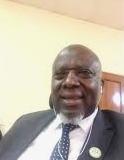Integration of Modern ICTs as Modes of Instruction for Islamic Education in Higher Institutions of Learning
DOI:
https://doi.org/10.53449/ije.v4i2.62Keywords:
Islamic education, instruction, ICTs, holistic personalityAbstract
Islamic education has largely been taught using traditional methods. The world has changed in so many aspects of life. Technology has affected all sectors including the teaching-learning environment. Use of electronic materials to search for knowledge and using multimedia for content creation can no longer be separated from education. These developments have to bring a paradigm shift in the mode of instruction of Islamic education in the contemporary world. In this paper, there’s an analysis of the existing literature about the ICT use in the teaching-learning environment. The researcher recommends a blend and balance between the traditional methods and use of modern technologies to enhance the instruction of Islamic education.
Downloads
References
Abulatifeh, R. F. (2011). The effect of using Islamic education related websites on King Fisal students' achievement in methods of teaching Islamic education subject. Journal of Islamic and Arabic Language, 87-96.
Ahmad. (n.d.). Musnad Ahmad.
Ajani, S. T., Bakar, B. A., & Sidek, H. M. (2013). Appreciation of computer knowledge in the teaching and learning of Islamic studies in Nigeria. American International Journal of Social Science, 2(2), 56-66.
Akhtar, M., & Rawat, K. J. (2015). A historiography of the educational system of the Muslims during the Umayyad’s and the Abbasid’s Period. The Dialogue, 9(4), 356-372.
Al-Alwani, A. E. S., & University of Kansas. (2005). Barriers to integrating information technology in Saudi Arabia science education. Ann Arbor, MI: UMI.
Alhirtani, N. A. (2020). The use of modern teaching methods in teaching arabic language at higher education phase from the point view of Arabic language professors: A case of a premier university. International Education Studies, 13(1), 32-41.
Alsharidah, M. (2018). Creating change in the use of information and communications technology by female Islamic studies teachers in Saudi Arabia. International Journal of Educational Administration and Policy Studies, 17-24.
Alzouebi, K. (2019). The Islamic studies teachers’ perception of integrating ICT into the teaching and learning in the UAE public schools: Challenges, opportunities and practices. International Journal of Technology Diffusion, 10(2), 69-82.
Armstrong, K. (1991). Islamic History. Retrieved December 2021, from sourcebooks.fordham.edu: https://sourcebooks.fordham.edu/islam/islamsbook.asp
Ashaaria, M. F., Ismaila, Z., Puteha, A., Samsudina, M. A., Ismaila, M., Kawangita, R., . . . Ramzib, M. I. (2012). An assessment of teaching and learning methodology in Islamic studies. UKM Teaching and Learning Congress 2011 (pp. 618 – 626). Kuala Lumpur: Procedia.
Asik, H. (2017). Learning-teaching methods of Prophet Muhammad (P.B.U.H). The Journal of International Social Research, 462-466.
Aziz, A. A., Ibrahim, M. A., Shaker, M. H., & Nor, A. M. (2016). Teaching technique of Islamic studies in higher learning institutions for non-Arabic Speakers: Experience of faculty of Quranic and Sunnah Studies and Tamhidi Centre, Universiti Sains Islam Malaysia. Universal Journal of Educational Research, 755-760.
Baiza, Y. (2018). Islamic education and development of educational traditions and institutions. Handbook of Islamic Education, 77-97.
Bakaul, M. (2018). Information and communication technology in education: Challenges and solutions for Bangladesh. Journal of Governance and Innovation, 4(1), 7-21.
Engkizar, Muliati, I., Rahman, R., & Alfurqan. (2017). The importance of integrating ICT into Islamic study teaching and learning process. Khalifa Journal of Islamic Education, 1(2), 148-168.
Faryadi, Q. (2015). An Islamic perspective of teaching philosophy: A personal justification. Journal of Research and Method in Education, 5(6), 49-60.
Ghavifekr, S., Kunjappan, T., Ramasamy, L., & Anthony, A. (2016). Teaching and learning with ICT tools: Issues and challenges from teachers’ perceptions. Malaysian Online Journal of Educational Technology, 4(2), 38-5.
Ghavifekr, S., & Rosdy, W. A. (2015). Teaching and learning with technology: Effectiveness of ICT integration in schools. International Journal of Research in Education and Science, 1(2), 175-191.
Habibu, T., Abdullah-Al-Mamun, & Clement, C. (2012, October). Difficulties faced by teachers in using ICT in teaching-learning at technical and higher educational institutions of Uganda. International Journal of Engineering Research and Technology, 1(7), 1-9.
Haque, S. (2016). Information and communication technology in Islamic propagation. International Journal of Information and Communication Technology Research, 6(8).
Hashim, R. (2017). Revitalisation of philosophy and philosophical inquiry in Muslim education: The way forward. IIUM.
Hettiarachchi, S., Damayanthi, B., Heenkenda, S., Dissanayake, D., Ranagalage, M., & 1, L. A. (2021). Online distance E-learning was the option, although the programme faced a number of challenges including, shortage of skills, procrastination and insufficient electronic materials. International Center for Multidisciplinary Studies, 13(21), 1-24.
Hilkemeijer, M. (2021). Teaching strategies for the classroom overcome technical issues with technology in the classroom. Retrieved June 2021, from https://www.ictesolutions.com.au/blog/teaching-strategies-for-the-classroom-overcome-technical-issues-with-technology-in-the-classroom/
Hosseini, S. E., Ramchahi, A. A., & Yusuf, R. J. (2014). The impact of information technology on Islamic Behaviour. Journal of Multidisciplinary Engineering Science and Technology, 1(5), 135-141.
Irgashevich, D. A. (2020, May). Methods of using cloud technologies in Islamic education institutions. International Journal of Innovations in Engineering Research and Technology [IJIERT], 7(5), 89-98.
Ishomuddin, & Mokhtar, S. B. (2017). Teaching-learning model of Islamic Education at madrasah based on mosque in Singapore. International Journal of Asian Social Science, 7(3), 218-225.
Johnson, A. M., Jacovina, M. E., Russell, D. G., & Soto, C. M. (2016). Challenges and solutions when using technologies in the classroom. Arizona, Arizona State.
Karima, H. (2017, May 27). Education in Islamic history. Retrieved 2021, from https://www.egypttoday.com/Article/4/5835/Education-in-Islamic-history
Khan, I. A. (2012). Authentication of hadith redefining the criteria. London: IIIT.
Lubis, M. A., Yunus, M. M., Diao, M., Muhamad, T. A., Mustapha, R., & Ishak, R. M. (2011). The perception and method in teaching and learning Islamic Education. International Journal of Education and Information Technologies, 5(1), 69-78.
Lubis, M., Yunus, Lampoh, A., & Ishak, N. (2010). The use of ICT in teaching Islamic subjects in Brunei Darussalam.
Miranda, G. L. (2007). The limits and possibilities of ICT in education. Educational Science Journal, 39-48.
Montoya, S. (2021). The Importance of Monitoring and Improving ICT Use in Education Post-Confinement. Retrieved 2021 June, from http://uis.unesco.org/: http://uis.unesco.org/en/blog/importance-monitoring-and-improving-ict-use-education-post-confinement
Musingafi, M. C., Mapuranga, B., Chiwanza, K., & Zebron, S. (2015). Challenges for open and distance learning (ODL) Students: Experiences from students of the Zimbabwe Open University. Journal of Education and Practice, 59-67.
Mustaffa, A., & Rashid, A. A. (2018). Teaching methodologies in Islamic education in 21st Century: Challenges and perspective. 6th International Conference in Islamic Education: Rabbani Education 2018 (pp. 609-614). Kalantan: IIUM.
Nawi, M. A., Jamsari, E. A., Hamzah, M. I., Sulaiman, A., & Umar, A. (2012). The impact of globalization on current Islamic education. Australian Journal of Basic and Applied Sciences, 74-78.
Njihia, M., Mwaniki, E., Ireri, A., & Chege, F. (2020). Obstacles to successful uptake of open distance and E-Learning (ODEL) programmes: A case of Kenyatta University, Kenya. African Multidisciplinary Journal of Research, 12-22.
Noh, M. A., & Kasim, A. Y. (2012). Teaching of Islamic doctrine and beliefs in school subject content knowledge and pedagogical considerations. International Journal of Humanities and Social Science, 2(11), 258-264.
Ogbomo, E. F. (2011). Issues and challenges in the use of information communication technology (ICTs) in education. Journal of Information and Knowledge Management, 2(1), 1-19.
Othman, N., & Mohamad, K. A. (2014). Integrated system in the Malaysian education paradigm: A catalyst for a holistic personality development. International Education Studies, 7(5), 8-14.
Pavan. (2015). ICTs in teacher education: Challenges and remedies. International Journal of Research Studies in Computer Science and Engineering, 2(3), 49-52.
Sartika, E., Suparjo, Hakim, I. N., & Supardan, D. (2018). Building students’ Islamic characters through information, communication and technology literacy. Academic Journal of Islamic Studies, 3(2).
Siddiquah, A., & Salim, Z. (2017). The ICT facilities, skills, usage, and the problems faced by the students of higher education. Journal of Mathematics Science and Technology Education, 4987-4994.
Sulaiman, K. D. O. (2014). The effects of information and communication technologies (ICT) On the teachings/ learning of Arabic and Islamic studies. International Journal of Islamic Studies, 2(1), 1-26.
Syah, M. N. (2016). Challenges of Islamic education in Muslim world: Historical, political, and socio-cultural perspective. Qudus International Journal of Islamic Studies, 4(1), 82-105.
Tayan, O., & Alginahi, Y. (2014). Information and communication technologies in teaching and spreading of the Holy Quran. The Glorious Qur'an and contemporary technologies (pp. 2-17). King Fahad Glorious Qur'an Printing Complex.
Zedana, A. M., Yusoffa, M. Y., & Mohameda, R. B. (2015). An innovative teaching method in Islamic studies: The Use of PowerPoint in University of Malaya as case study. 4th World Conference on Educational Technology Researches, WCETR- 2014 (pp. 543 – 549). Kuala Lumpur: Procedia.








